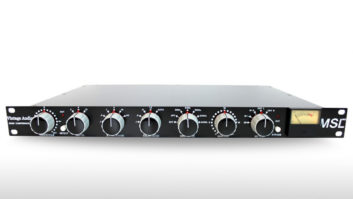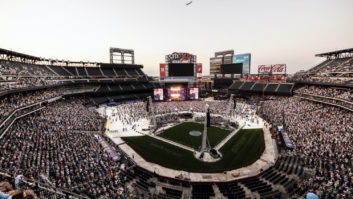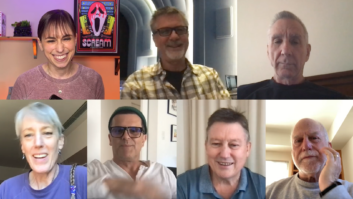One year ago, Mackie was completing its plans to acquire RCF, a major OEM supplier of speakers, horns and drivers to manufacturers and touring companies worldwide. Based in the Northern Italian city of Reggio Emilia, RCF has, over the past half-century, established itself as a leader in transducer technology and is a well-known player in the European contractor market. From both sides, the partnership made sense: RCF wanted to increase its investment capital and Mackie needed a high-technology ally for its entry into the sound reinforcement market.
Concurrently with the RCF acquisition, Mackie acquired Fussion Audio, a California-based designer of high-performance touring/installation systems. Fussion uses RCF components and is run by former RCF North America marketing VP Marcelo Vercelli. During this time, Vercelli met RCF’s principal system and transducer engineer, George Krampera, a Czech designer who had previously worked on successful products such as Yorkville’s Elite line, and RCF’s Art Series and woofer products.
Krampera’s strength is finding simple answers to complex problems, such as hum in live performance. “Lifting the ground to cure hum is a major problem,” says Krampera. “One solution I’ve used in Czechoslovakia since 1975 is to place a diode across the ground lift switch. The diodes are conductive above 15 volts, and up to that level, the ground floats. It’s an easy, low-cost solution, but the difficulty is getting CE and UL approval.”
Krampera and Vercelli’s collaboration led to the Fussion 3000, an active, three-way full-range system with onboard 1,500-, 300- and 150-watt amps feeding four 12-inch woofers; a horn-loaded, 8-inch cone midrange with phase plug; and a 1-inch HF driver on a wide dispersion horn. A matching double-18, 3,000-watt subwoofer is optional. According to Krampera, one of the secrets behind the 3000’s ultralow-distortion performance-said to be in the 0.05% range at full rated power-is the “near-ideal relationships you can create between speakers, electronics and horn designs.
“We’ve been working on the intermodulation distortion problem,” Krampera explains. “Air above 140 dB is nonlinear, and low compression-ratio horns reduce the pressure on the cone for lower distortion and better intelligibility, even at longer distances.” Krampera points out that most long-throw designs create distortion within the horn, and that same distortion is what the audience in the back row will hear. “Our approach works up to 50 yards away, for up to 5,000 people, and we’re researching a new design that works beyond 100 yards. In addition to horn geometry, our IMD solution involves the amplifier design, using Trans-FET amps for the mids and lows, and low-distortion, double voice coil midrange speakers.”
Another Krampera method of reducing distortion is the creation of a near-zero-inductance woofer, using a second winding on the pole piece opposite the voice coil, resulting in a purely resistive driver with distortion around 0.01%-about ten times lower than conventional designs.
The onboard amplification driving the Fussion 3000 is a compact, high-efficiency design that derives 1,500 watts (into 2 ohms) from 22 output devices mounted on a chassis about the size of a piece of paper. However, beyond merely mounting amps inside speakers, the Mackie design approach is to build active, powered systems under electronic control. It’s all a matter of physics and efficiency, according to Vercelli. “What’s easy to do electronically is often difficult to do with acoustics, and what’s easy to do acoustically can sometimes be difficult to do with electronics,” he says. “Our ultimate goal is to incorporate the technology we developed for our Digital 8-Bus console into DSP control systems for speakers.”
A recent example of that philosophy is the MAS 1530 Mackie Active Stage System, a three-way, triamplified (300 + 100 + 100-watt) speaker with onboard time correction, phase alignment and EQ. Combined with the SRS 1500a active 15-inch/600-watt sub, the MAS 1530 offers a 1,100-watt system retailing for $1,400. Also recently introduced is Mackie’s SRM 450/C300 line of composite-molded, active speakers. (The ultra-lightweight designs and “Darth Vader” appearance made a major splash but may have overshadowed Mackie’s entry into the high-end system market.) A low-profile, wide-dispersion, powered 250-watt slant monitor is also in the works. All in all, an impressive start for a division that’s less than a year old.
Mackie Designs Inc., 16220 Wood-Red Rd. NE, Woodinville, WA 98072; 425/487-4333; Web site: www.mackie.com.







